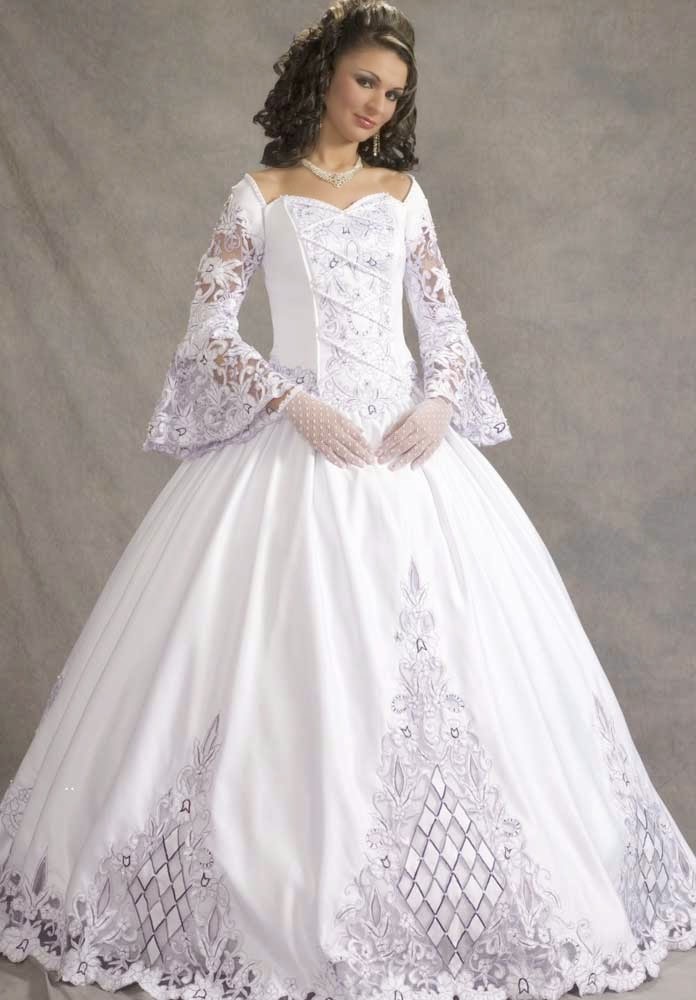The Celtic gown is not just a piece of clothing; it embodies a rich cultural heritage and artistic expression that dates back centuries. As fashion evolves, the Celtic gown remains a symbol of elegance and tradition, captivating those who appreciate its intricate designs and historical significance. This article will delve deep into the world of Celtic gowns, exploring their origins, designs, cultural relevance, and modern interpretations.
Understanding the Celtic gown requires a journey through history, tracing its roots to the ancient Celtic tribes of Europe. These gowns were often characterized by their unique patterns, vibrant colors, and the use of natural materials. Today, they serve not only as formal attire but also as a representation of identity and pride in Celtic heritage.
In this comprehensive exploration, we will cover various aspects of the Celtic gown, from its historical context to practical tips for wearing and styling them today. Join us as we uncover the beauty and significance of this timeless garment.
Table of Contents
- 1. History of the Celtic Gown
- 2. Design Elements of Celtic Gowns
- 3. Cultural Significance
- 4. Modern Interpretations of the Celtic Gown
- 5. How to Style a Celtic Gown
- 6. Materials Used in Celtic Gowns
- 7. Occasions to Wear a Celtic Gown
- 8. Conclusion
1. History of the Celtic Gown
The history of the Celtic gown is deeply intertwined with the cultural practices of the Celtic people. Originating in regions such as Ireland, Scotland, and Wales, these garments were traditionally worn during significant life events including weddings, festivals, and religious ceremonies.
In ancient times, Celtic gowns were made from wool or linen, often handwoven and dyed using natural plant pigments. The styles varied significantly based on regional influences and personal preferences, showcasing a blend of functionality and artistry.
Evolution Through the Ages
As time progressed, the Celtic gown underwent various transformations:
- Middle Ages: The gown became more structured, often featuring long sleeves and a fitted bodice.
- Renaissance: Rich fabrics and intricate embroidery were introduced, elevating the gown's status.
- Modern Era: Contemporary designs incorporate traditional elements while embracing modern fashion trends.
2. Design Elements of Celtic Gowns
The design of a Celtic gown is marked by its distinctive features that reflect the artistic heritage of the Celts. Common elements include:
Patterns and Embroidery
One of the most striking features of Celtic gowns is their intricate patterns and embroidery. These designs often draw inspiration from nature, mythology, and ancient symbols, such as:
- Celtic knots
- Spirals
- Animal motifs
Color Palettes
Celtic gowns typically feature rich, earthy tones, complemented by vibrant hues. Common colors include:
- Emerald green
- Royal blue
- Deep red
3. Cultural Significance
The Celtic gown is more than just a fashion statement; it is a vessel of cultural identity. For many, wearing a Celtic gown is a way to connect with their ancestry and showcase their heritage.
During traditional events, these gowns are worn with pride, often accompanied by other cultural artifacts such as jewelry and accessories. The gowns serve as a reminder of the rich history and traditions of the Celtic people.
4. Modern Interpretations of the Celtic Gown
In recent years, there has been a resurgence of interest in Celtic culture, leading to a revival of traditional clothing, including the Celtic gown. Modern designers are creating innovative interpretations that blend traditional craftsmanship with contemporary fashion sensibilities.
Some modern styles include:
- A-line silhouettes
- Asymmetrical hemlines
- Layered designs
5. How to Style a Celtic Gown
Styling a Celtic gown can be a fun and creative process. Here are some tips to help you make the most of this elegant garment:
Accessorizing
To enhance the beauty of your Celtic gown, consider adding:
- Chunky jewelry
- Headpieces or flower crowns
- Shawls or capes
Footwear Choices
Footwear can significantly impact the overall look. Opt for:
- Traditional lace-up boots for a historical touch
- Elegant heels for formal occasions
- Flats for a more casual look
6. Materials Used in Celtic Gowns
The choice of materials is crucial in creating a high-quality Celtic gown. Traditionally, these gowns were made from:
- Wool: Known for its warmth and durability.
- Linen: A lightweight fabric ideal for warmer climates.
- Silk: Often used in more luxurious designs.
Today, sustainable materials are also gaining popularity, aligning with the growing trend of eco-conscious fashion.
7. Occasions to Wear a Celtic Gown
Celtic gowns are versatile and can be worn on various occasions, such as:
- Weddings: Perfect for brides and bridesmaids looking for a unique twist.
- Cultural festivals: Celebrate heritage with pride.
- Formal events: Stand out at galas and formal gatherings.
8. Conclusion
The Celtic gown is a beautiful blend of history, culture, and artistry. Its timeless elegance continues to inspire fashion enthusiasts and those seeking to connect with their roots. Whether you are attending a special event or simply want to express your cultural identity, a Celtic gown can be a stunning choice.
We encourage you to explore the world of Celtic fashion, consider adding a gown to your wardrobe, and share your experiences in the comments below. Don’t forget to share this article with fellow fashion lovers or anyone interested in Celtic culture!
Thank you for reading! We hope to see you back for more engaging articles on fashion, culture, and history.



